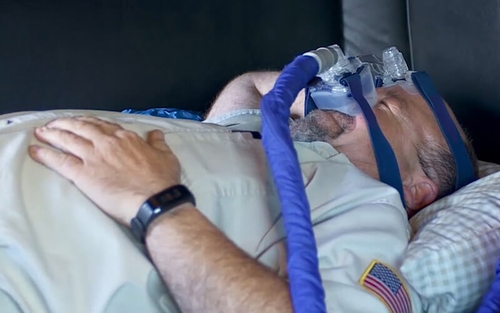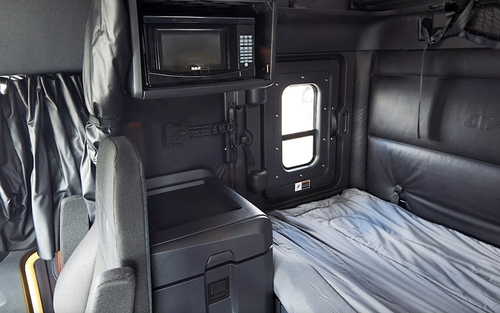Estimated reading time: 3 minutes
Understanding and complying with Hours of Service (HOS) rules is crucial for maintaining safety and well-being as a truck driver. Sleeper berth regulations are specifically there to ensure drivers are always well-rested and alert.
Keep reading to learn about what a sleeper berth is, how time in a sleeper berth differs from off duty time and what sleeper berth rules truck drivers need to know.
What is a sleeper berth?
Before getting into sleeper berth rules for truck drivers, it's important to define what a sleeper berth is. A sleeper berth is a designated compartment or area in a Commercial Motor Vehicle (CMV) where truck drivers rest or sleep. Also known as a “sleeper cab” or just “sleeper,” these are commonly used terms by long-haul truck drivers.
To be considered a sleeper berth, the compartment must conform to the requirements outlined in FMCSR 393.76. Modern sleeper berths typically provide many additional features for driver comfort. Schneider’s sleeper cabs, for example, include:
- Memory-foam mattresses.
- APUs and bunk heaters.
- Power inverters and outlets.
- Built-in refrigerators.
- A spot for a microwave.
Learn more about these features by checking out our guide to Schneider’s truck specs.
What sleeper berth rules do truck drivers have to follow?
The term “sleeper berth” also refers to one of the four duty statuses truck drivers fall under while following HOS regulations. In a truck driver’s logs, “sleeper berth” is all the time a driver spends sleeping or resting in the sleeper berth of their CMV.
Truck drivers can use the “sleeper berth” status to get the off-duty time required by HOS regulations. According to these regulations, truck drivers are mandated to take at least a 10-hour break after driving for their maximum allowed hours.
These 10-hour breaks are used to reset the two following limits for truck drivers:
- 11-hour driving limit: A driver cannot drive, and no motor carrier can require or allow a driver to drive, more than 11 hours following 10 consecutive hours off duty.
- 14-hour limit: A driver may not drive, and no motor carrier can require or allow a driver to drive, after having reached the 14th consecutive hour following 10 consecutive hours off duty, regardless of the composition of those 14 hours.
A driver’s 10-hour break can be made up of:
- 10 consecutive hours in the sleeper berth.
- 10 consecutive hours of “off duty” time.
- A combination of sleeper berth and off duty for 10 consecutive hours.
Time spent in sleeper berth also applies to the 30-minute break rule and 34-hour reset for truck drivers.
What is the difference between sleeper berth vs off duty?
While both "sleeper berth" and "off duty" refer to periods when a driver is not working, there are some key differences:
Off duty refers to any time a driver:
- Is not on duty.
- Is not required to be ready to work.
- Is not under any responsibility for performing work.
Examples of activities that would be logged as off duty include:
- Time at home or in a motel.
- Time at a truck stop or driver terminal.
- Time spent eating.
- Time spent stretching.
Sleeper berth refers specifically to all time spent in the sleeper berth compartment of a CMV.
How does a split sleeper berth work?
The split sleeper berth rule allows drivers to divide their 10-hour break into two separate periods under certain conditions. For a better understanding of the split sleeper berth rule, read the full Hours of Service regulations.
Note: To ensure proper rest, Schneider requires drivers to take the full 10-hour break before returning to driving.






